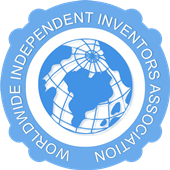- BY Admin
- POSTED IN Articles, Fără categorie
- WITH 0 COMMENTS
- PERMALINK
- STANDARD POST TYPE

In most countries, both natural persons and corporate entities may apply for a patent. In the United States, however, only the inventor(s) may apply for a patent although it may be assigned to a corporate entity subsequently and inventors may be required to assign inventions to their employers under a contract of employment. In most European countries, ownership of an invention may pass from the inventor to their employer by rule of law if the invention was made in the course of the inventor’s normal or specifically assigned employment duties, where an invention might reasonably be expected to result from carrying out those duties, or if the inventor had a special obligation to further the interests of the employer’s company.
The inventors, their successors or their assignees become the proprietors of the patent when and if it is granted. If a patent is granted to more than one proprietor, the laws of the country in question and any agreement between the proprietors may affect the extent to which each proprietor can exploit the patent. For example, in some countries, each proprietor may freely license or assign their rights in the patent to another person while the law in other countries prohibits such actions without the permission of the other proprietor(s).
The ability to assign ownership rights increases the liquidity of a patent as property. Inventors can obtain patents and then sell them to third parties. The third parties then own the patents and have the same rights to prevent others from exploiting the claimed inventions, as if they had originally made the inventions themselves.
Governing laws
The grant and enforcement of patents are governed by national laws, and also by international treaties, where those treaties have been given effect in national laws. Patents are, therefore, territorial in nature.
Commonly, a nation forms a patent office with responsibility for operating that nation’s patent system, within the relevant patent laws. The patent office generally has responsibility for the grant of patents, with infringement being the remit of national courts.
There is a trend towards global harmonization of patent laws, with the World Trade Organization (WTO) being particularly active in this area. The TRIPs Agreement has been largely successful in providing a forum for nations to agree on an aligned set of patent laws. Conformity with the TRIPs agreement is a requirement of admission to the WTO and so compliance is seen by many nations as important. This has also led to many developing nations, which may historically have developed different laws to aid their development, enforcing patents laws in line with global practice.
A key international convention relating to patents is the Paris Convention for the Protection of Industrial Property, initially signed in 1883. The Paris Convention sets out a range of basic rules relating to patents, and although the convention does not have direct legal effect in all national jurisdictions, the principles of the convention are incorporated into all notable current patent systems. The most significant aspect of the convention is the provision of the right to claim priority: filing an application in any one member state of the Paris Convention preserves the right for one year to file in any other member state, and receive the benefit of the original filing date. Because the right to a patent is intensely date-driven, this right is fundamental to modern patent usage.
The authority for patent statutes in different countries varies. In the UK, substantive patent law is contained in the Patents Act 1977 as amended. In the United States, the Constitution empowers Congress to make laws to “promote the Progress of Science and useful Arts…” The laws Congress passed are codified in Title 35 of the United States Code and created the United States Patent and Trademark Office.
In addition, there are international treaty procedures, such as the procedures under the European Patent Convention (EPC) [administered by the European Patent Organisation (EPOrg)], and the Patent Cooperation Treaty (PCT) (administered by WIPO and covering more than 140 countries), that centralize some portion of the filing and examination procedure. Similar arrangements exist among the member states of ARIPO and OAPI, the analogous treaties among African countries, and the nine CIS member states that have formed the Eurasian Patent Organization.




